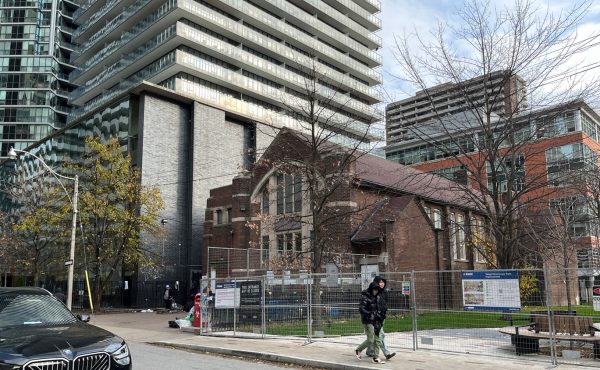
A list of articles from the weekend newspapers:
Tall buildings and shadows: Spacing associate editor Dylan Reid posted on the Spacing Wire back in November about shadows created by tall buildings. The Star did a cover story on shadows in today’s paper. “It was not always the most decorous debate when Toronto City Council met last Thursday to endorse plans for a new Four Seasons Hotel in Yorkville, a 46-storey spire that will fairly loom over the playground of nearby Jesse Ketchum Public School. There were personal insults. There was innuendo galore. About politicians being too cosy with developers. About “chequebook” planning.As part of the deal, the developers of the Four Seasons have pledged to fork out $5 million in so-called “community benefits” — a way of making amends for a tower that vastly exceeds the area’s formal height restrictions.”
In Saturday’s Globe and Mail, new Spacing contributor Alex Bozikovic asks three urban observers to weigh in on what makes or breaks a high-rise in this city.
Christopher Hume talks about the Puglys — the contest of pretty ugly buildings in Toronto. “The Pugly Awards are back, and with them a chance for all Torontonians to pass judgment on the best and worst of architecture in the city. This year’s crop includes 15 buildings, all of which were granted occupancy permits in 2005, in other words, that were completed and inhabited. If nothing else, the line-up, though smaller than last year’s, covers a lot of territory, from the usual condo crudités to some of the best institutional buildings seen in this city in ages.Interesting, too, that it’s the public sector that leads the way. True, there are two residential projects (of nine) that rank among the best, but the rest are nothing to write home about. The good ones — 18 Yorkville and Radio City (285 Mutual St.) — were both designed by Toronto’s architectsAlliance, one of few practices that have the condo tower figured out.”
More articles inspired by the passing of Jane Jacobs, the first by local historian Alfred Holden: “Jane Jacobs didn’t give interviews willy-nilly. “I have to concentrate on my writing,” she said to me regretfully, more than once. But the family name was in the phone book, and the Jacobs’ address, 69 Albany Ave., is etched in the dedication of one of her books.So the great guru on cities was easy to find, and always polite and respectful. If it wasn’t an interview, you got a few words, then some more, or, as happened to me, a call back with further observations and a kindly, ‘Do you have what you need?'”
Christopher Hume and Leslie Shrivener compile parts of the city that exemplify the theroies of Ms. Jacobs [it’s a PDF for download].
The Globe and Mail does something similar: In remembering the city’s favourite adopted urbanologist, Deirdre Kelly asks Jacobs’ friends and fellow fighters about the places she held dearest to her heart.
Keeping on the theme of city building, the Star has a follow-up to their popular What If series from two weekends ago. This time, readers emailed in their ideas of how to build a great city in Toronto.
Union Station was to undergo significant renovations but the controversial deal fell through. In the Globe and Mail: “When the deal to revitalize Union Station fell apart this week, it had already been on life support for months. Now the city’s five-year effort to renew the landmark transportation hub with a private-sector partner is all but legally dead. After years of controversy and delay, the city and Union Pearson Group lost faith in each other’s ability to cross the finish line, a May 31 deadline to close the deal. ‘We simply ran out of time,’ UPG spokesman Ron Taylor said.”
In an editorial on Sunday, the Toronto Star comes out in favour of a streetcar network in Scarborough to replace the aging RT system. “In practical terms, now is simply not the time for Scarborough subway expansion. That train has left the station, and it is headed full speed toward York. Buying new light rail cars to replace the old specimens now in use would be the cheapest and fastest option. But it would be a poor answer to Scarborough’s growing transit needs.Relying on streetcars, linked into trains, would by contrast increase ridership while costing far less than a subway. And it could be in service long before the existing light rail system rusts into oblivion.”



